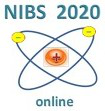Speaker
Description
BTR code has been used for many years in the design and performance optimization of ITER HNB/DNB components and other NBI systems based on negative or positive ion sources. BTR beam formation and transmission along the beam line is simulated by a simple and comprehensive 6D beam model, which accounts for beam transport losses and power deposition on the injector surfaces. Beam particles tracks are followed in deterministic manner (no random values) with electromagnetic fields deflection, with transforming on gas and plasma targets (neutralization, ionization in gas/plasma). In BTR power flux and power deposition at the injector components are calculated along the entire beam track. Each single BTR run in “conventional” BTR session is started by the input manual tuning procedure for a specific scenario, which is next followed by the code restart. This input routine required the User's extensive efforts and time to get the final result for multiple operation scenarios. Recent modifications in BTR-5 code engine and I/O have made it possible to run automatically multi-parametric scans of different scenarios by a single click, with a preset list of scenarios input records. This reduces much of the User’s handwork, and makes the total design routine shorter and more efficient (including the post-processing efforts). NBI geometry input has become more flexible, allowing the User to choose between the “standard” NBI geometry (PDP - compatible) and free-surfaces input. Memory optimization in BTR-5 allows independent tracking of each sort of particles - to obtain the optimum statistics for maps calculation, without restrictions (in earlier versions the maximum was ~10000 particles per beamlet). BTR-5 multi-run version has been used for parametric scans of DLM power loading, which resulted in the DL “worst case” scenario definition, and maximum power load for each DL surface across all the range of scenarios. Power maps resolution in BTR-5 (unsmoothed 2D profiles) on average is higher than in BTR-4, due to the increased number of model particles of each sort, the standard cell for each surface is varied between 1mm and 1cm depending on the specific surface dimensions.
Summary
BTR code has been used for many years in the design and performance optimization of ITER HNB/DNB components and other NBI systems based on negative or positive ion sources. BTR beam formation and transmission along the beam line is simulated by a simple and comprehensive 6D beam model, which accounts for beam transport losses and power deposition on the injector surfaces. Beam particles tracks are followed in deterministic manner (no random values) with electromagnetic fields deflection, with transforming on gas and plasma targets (neutralization, ionization in gas/plasma). In BTR power flux and power deposition at the injector components are calculated along the entire beam track. Each single BTR run in “conventional” BTR session is started by the input manual tuning procedure for a specific scenario, which is next followed by the code restart. This input routine required the User's extensive efforts and time to get the final result for multiple operation scenarios. Recent modifications in BTR-5 code engine and I/O have made it possible to run automatically multi-parametric scans of different scenarios by a single click, with a preset list of scenarios input records. This reduces much of the User’s handwork, and makes the total design routine shorter and more efficient (including the post-processing efforts). NBI geometry input has become more flexible, allowing the User to choose between the “standard” NBI geometry (PDP - compatible) and free-surfaces input. Memory optimization in BTR-5 allows independent tracking of each sort of particles - to obtain the optimum statistics for maps calculation, without restrictions (in earlier versions the maximum was ~10000 particles per beamlet). BTR-5 multi-run version has been used for parametric scans of DLM power loading, which resulted in the DL “worst case” scenario definition, and maximum power load for each DL surface across all the range of scenarios. Power maps resolution in BTR-5 (unsmoothed 2D profiles) on average is higher than in BTR-4, due to the increased number of model particles of each sort, the standard cell for each surface is varied between 1mm and 1cm depending on the specific surface dimensions.

